The Ilkley Osteopathic Practice
Patient Information Sheet
What is osteopathy?
Osteopathic medicine is an established system of diagnosis and manual treatment that is based on the structure of your body. Better structural function can enhance other body activities such as nerve conduction, circulation, breathing, digestion and elimination thereby improving vitality and general health.
Treatment is aimed at improving mobility and reducing the inflammatory processes, thereby offering relief from pain.
What should I expect to happen at my first visit to an osteopath?
Your osteopath should make you feel at ease during your first consultation and any subsequent appointments, and tell you what is happening throughout. You should feel free to ask questions at any point during the consultation. It is quite acceptable to bring a friend or relative along to the consultation if you prefer to do so. An adult or appointed representative should be present with a patient who is 16 years or younger.
On your first visit, and before examination begins, the osteopath will discuss and record your current and past medical history. It is essential that you inform your osteopath about any health condition or medication that is not discussed during the case history taking process. Equally you should inform your osteopath if you are receiving treatment or taking medication for other conditions, particularly diabetes, cancer, osteoporosis, asthma or clotting disorders.
As the consultation progresses, you will then normally be asked to remove some of your clothing so that a series of observations and biomechanical assessments can be made to identify points of weakness or excessive strain throughout the body. You should ask questions if you have any concerns or discomfort during treatment, and also tell you osteopath if you are not comfortable with certain forms of osteopathic treatment.
Is osteopathy safe?
Osteopathy is generally very safe. Osteopaths undergo a long period of training and are regulated by the General Osteopathic Council (www.osteopathy.org.uk). Training prepares osteopaths to examine and screen for potential difficulties that indicate where certain techniques should not be used, thereby avoiding patients being exposed to unnecessary risk.
Are there side effects?
Serious side effects are rare – they have been reported as occurring in between 1 in 400,000 to 1 in 5.85 million patients undergoing upper cervical spine manipulation. Many patients attending osteopaths for treatment are currently taking non-steroidal anti-inflammatories, an estimated risk of serious side effects for this type of medication (e.g. gastro-intestinal ulcer or death) has, by comparison, been estimated by some researchers to affect 1 in 1000 patients.
What responses can I expect to osteopathic treatment?
Many patients consult osteopaths looking for relief from painful symptoms; some patients experience some initial aching for 24 to 48 hours after treatment but then start to gain relief from their symptoms. Research has been undertaken to look at common responses to manual therapy treatment and this has shown that local discomfort, tiredness, headache or stiffness can occur after treatment in approximately 10-20% patients.
Further investigations
In certain circumstances, further investigations may be suggested which could include an x-ray or blood test. If needed the osteopath may contact your doctor, with your permission.

